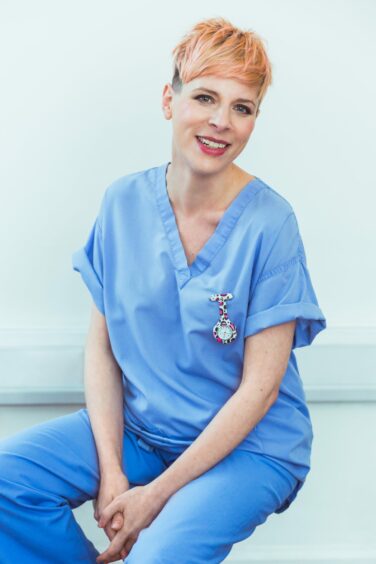
A midwife has warned systemic problems in maternity services mean mothers are not getting adequate care after giving birth.
Leah Hazard, an NHS midwife and author, said the pressure on staff to get mothers and babies home quickly meant hospitals were often failing to provide women with the aftercare they needed.
As a result, some women were developing complications – such as infection – at home that could have been prevented or treated sooner if they had been given the right care in hospital, she said.
It comes after a survey of nearly 900 Scottish midwives by the Royal College of Midwives (RCM) in May found three quarters were considering leaving the profession, with many citing frustration at being unable to provide an acceptable quality of care due to short staffing.
Concerns are mounting over staff shortages in maternity units with half of midwives surveyed saying their department “rarely” had safe levels.
Speaking on the Mother Bodies podcast, which launches on Tuesday, Hazard said:
“Although the staff more often than not are very skilled, empathetic, compassionate and hardworking, the pressure on them is through-put. There is pressure to tick certain boxes and get mother and baby safely out the door.
“It means that, quite often, women don’t get the time and care that they really deserve at that stage when they are really, really vulnerable and have really complex needs.”
She said the knock-on effect was that women were more likely to develop health issues when they got home.
“Community midwives then have all these people to look after who’ve been ejected from the hospital, probably quite early on, who have issues and complications that maybe could have been prevented had that not been the case,” she added.
Hazard, author of Hard Pushed: A Midwife’s Story, said the NHS treated maternity services as a whole as a “poor relation” and that years of “chronic under-funding” were to blame for the current problems.
“Unfortunately, we’re now reaping the consequences of those years,” she added. “So, although there are many really skilled, wonderful, dedicated midwives trying to make things better on the shop floor, we alone can’t surmount these obstacles, which are enormous and systemic.”
RCM Scotland director Jaki Lambert said: “There is a real disconnect between what maternity services need and what resources are available to them. Without action, the staff – and the system they are propping up – will break. This is not safe, it’s not sustainable, and it’s not acceptable.”
The Scottish Government said: “It is easier than ever to become a midwife in Scotland.
The £10,000 bursary for Scottish midwifery students is the highest in the UK and those with healthcare backgrounds can access our fast-track scheme.”

Enjoy the convenience of having The Sunday Post delivered as a digital ePaper straight to your smartphone, tablet or computer.
Subscribe for only £5.49 a month and enjoy all the benefits of the printed paper as a digital replica.
Subscribe